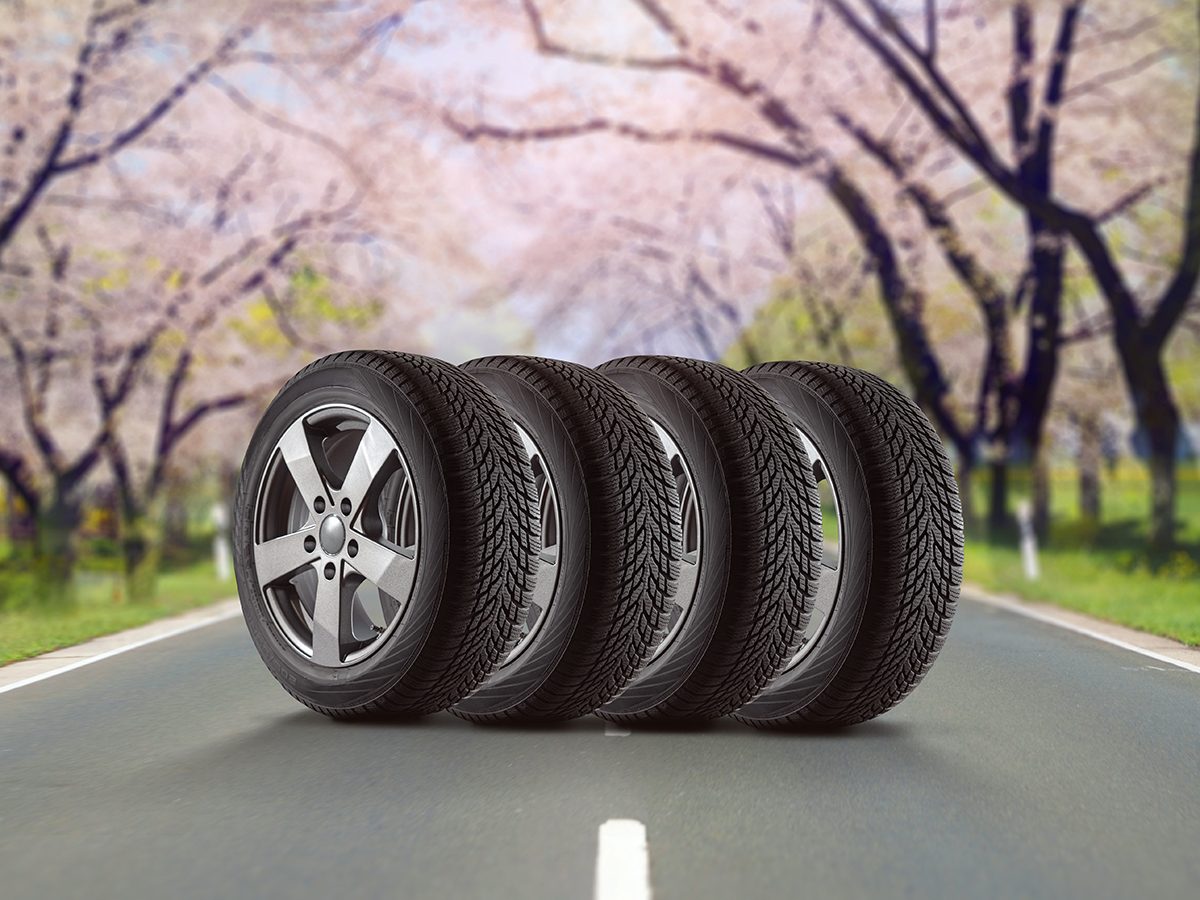
In Canada's variable climate, there isn’t truly an "all-season tire." Due to dramatic temperature fluctuations ranging from extremely cold winters to blisteringly hot summers, your car requires two types of tires with distinct rubber compositions: one optimized for icy conditions and another more effective on warm roads. Employing unsuitable tires throughout the year could jeopardize your safety and lead to higher expenses down the line.
When Should You Take Off Winter Tires?
The vast majority In Canada, many drivers opt for a set of winter tires, which not only become legally required in certain provinces but also represent a wise choice. Unlike standard rubber, these specialized tires do not harden at low temperatures, ensuring consistent traction on icy roads. Their deeply grooved treads effectively expel accumulated snow and slush away from the tire rather than letting them build up. Additionally, some winter tires feature a soft, spongy material designed to eliminate the film of water atop ice that often leads to skidding.
Determining precisely when to take off winter tires is more precise than simply waiting for spring. According to Gabe Scavone, who owns a tire shop, you should store your winter tires once daytime temperatures remain steadily above 7°C. OK Tire Weston An automobile service center located in North York, Ontario. This temperature marks the point where the soft rubber of winter tires, which provides grip in colder conditions, begins to lose effectiveness when heated up—causing quicker wear and becoming softer and slipperier as a result.
In summertime, winter tires exhibit longer braking distances 26 per cent “Long-lasting compared to all-season tires,” explains Scavone. “All-season tires are constructed with harder rubber, which enhances control—including your capacity to turn, speed up, and slow down—as well as how quickly your car responds when you need to make a evasive move.”
During intense rainfall, the tread pattern designed for snowy conditions—which aids winter tires' traction—can turn into a disadvantage. As Scavone explains, "Since winter tires aren't as efficient at draining water compared to how well they handle snow, there’s a higher chance of hydroplaning during summertime." Hydroplaning occurs when the tires fail to expel water swiftly enough to keep contact with the roadway, leading the vehicle to glide over the wet pavement.
It Can Also Help You Save Money
Even though purchasing two complete tire sets might appear costly upfront, it can end up being economical over time. Using winter tires during warmer months causes them to degrade quicker, leading to more frequent replacements. Additionally, these worn-out treads will not provide adequate grip come the following winter. Typically, switching between sets every season allows one set of winter tires to endure for about six winters, whereas all-season tires usually manage up to 100,000 kilometers.
As gasoline prices increase once more, changing to all-season tires during the hotter seasons might save money when fueling up Scavone points out that this is due to their shallower treads and more direct contact with the roadway. He adds, "Moreover, because they are quieter, all-season tires also feature reduced rolling resistance, requiring less energy to roll." This leads to greater fuel efficiency and lower gas costs.”
Did you accidentally overlook switching your winter tires last year? (I’m not judging.) Your tires might still be salvageable—during your next service visit, request an inspection and measurement using a professional tread depth gauge, as suggested by Scavone. Based on the tire’s model and manufacturing date, they can determine how much use they have left. As stated by Transport Canada, if your treads wear down to 4mm Or sooner, the tires will require replacement by next winter.
Now that you understand when to take off your winter tires, explore these nine points. strange car noises —what these might signify.
The post What Occurs When You Fail to Change Your Winter Tires in Spring? appeared first on Reader's Digest Canada .
